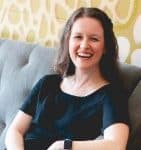
The Berkeley Artificial Intelligence Research Lab has launched the latest version of the open-source Robotic Operating System. It’s designed to offload robotic tasks to a remote server to speed up response and help reduce the latency that plagues robotic operations. The new platform has already gone live on GitHub.
Robotics are often limited by the lack of robust onboard computing capabilities. These are due to the physical constraints of most robotic setups. They rarely have the type of GPU or hardware accelerators that the newest algorithms require to shine.
Cloud computing could help speed up operations so that next-gen robotics applications can take advantage of these advanced algorithms. The platform, known as FogROS 2, was the latest iteration of their work.
See also: Deliver Analytics Like Amazon Delivers Packages
Removing complex onboard processing
The cloud enables operations to take place via a remote server rather than using onboard processing power. Similar to video games adapting to multiple devices, cloud computing provides a pathway to reduce not only the complexity of processing but also the costs.
According to the researchers involved, “FogROS 2 reduces SLAM latency by 50%, reduces grasp planning time from 14s to 1.2s, and speeds up motion planning 28x. When compared to alternatives, FogROS 2 reduces network utilization by up to 3.8x.”
The team plans to expand cloud provider and service integrations so that a wider number of users can take advantage of the program. The latest update also includes several new features:
- Improvements to ROSBag
- Performance and stability improvements
- Enhanced documentation
- Developer ergonomics.
These developments could open the door to other processing-intensive tasks such as stochastic planning or unsupervised deep learning from multiple robots. Tasks such as these would have far-reaching effects for businesses currently adapting more complex robotics into their everyday operations by saving them time and making them cost-effective.

Elizabeth Wallace is a Nashville-based freelance writer with a soft spot for data science and AI and a background in linguistics. She spent 13 years teaching language in higher ed and now helps startups and other organizations explain – clearly – what it is they do.


